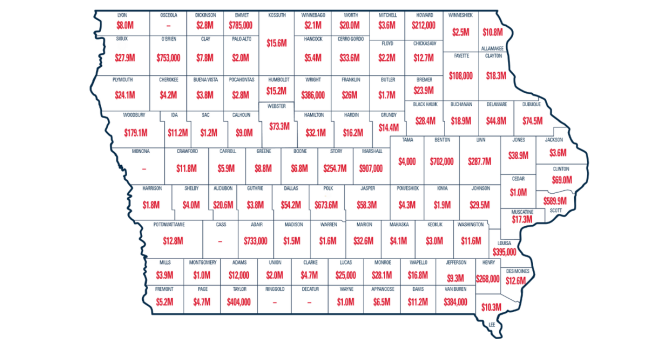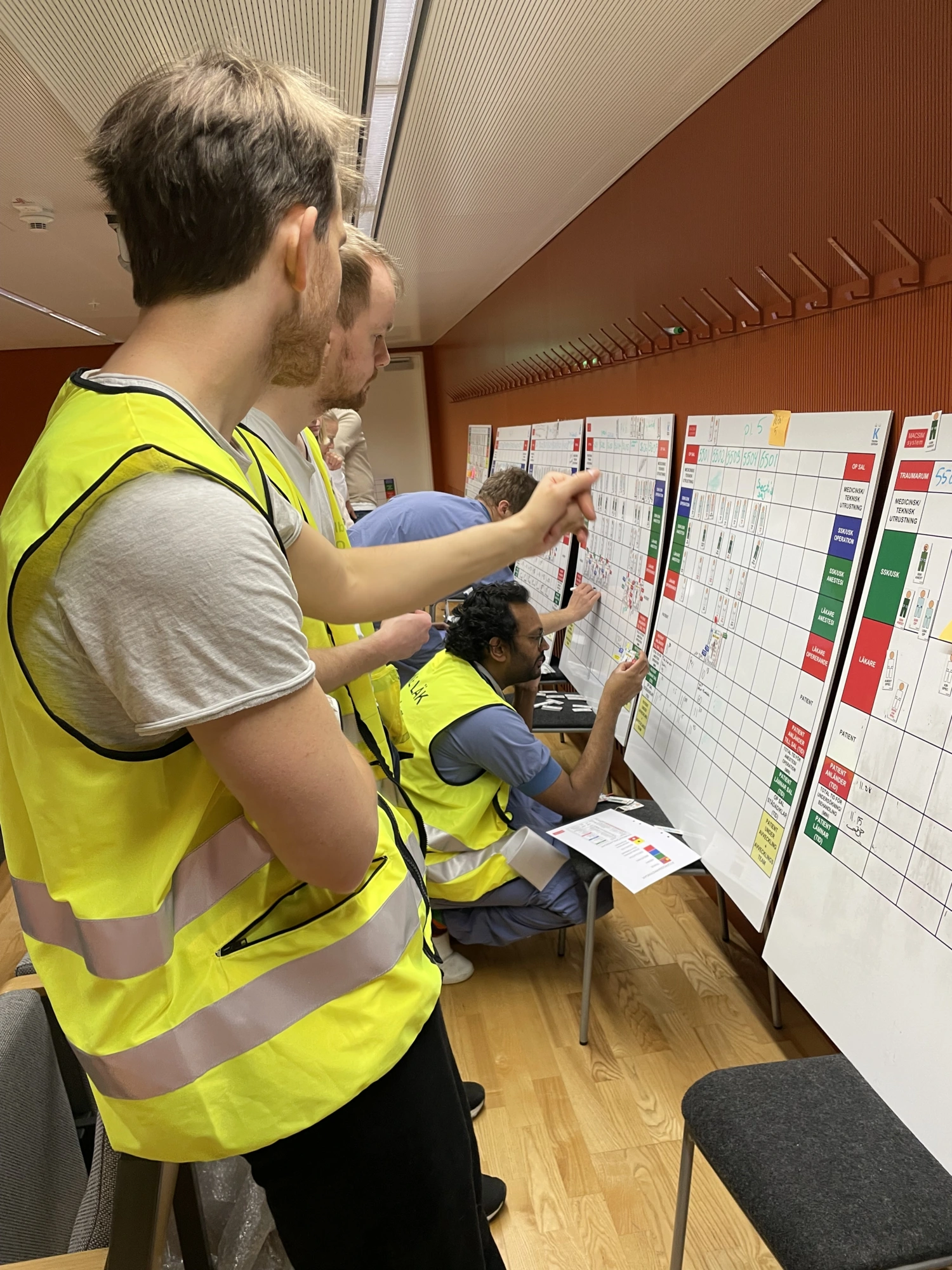Physicists have found “electron pairing,” a hallmark feature of superconductivity, at temperatures and energies well above the critical threshold where superconductivity happens.
Rice University’s Doug Natelson, co-corresponding author of a paper about the work in this week’s Nature, said the discovery of Cooper pairs of electrons “a bit above the critical temperature won’t be ‘crazy surprising’ to some people. The thing that’s more weird is that it looks like there are two different energy scales. There’s a higher energy scale where the pairs form, and there’s a lower energy scale where they all decide to join hands and act collectively and coherently, the behavior that actually brings about superconductivity.”

Rice University physicists (from left) Liyang Chen, Panpan Zhou and Doug Natelson and colleagues at Brookhaven National Laboratory and the University of Connecticut found evidence of electron pairing — a hallmark feature of superconductivity — at temperatures and energies well above the critical threshold where superconductivity occurs. The research appears this week in Nature. (Photo by Jeff Fitlow/Rice University)
Electrical resistance is so common in the modern world that most of us take it for granted that computers, smartphones and electrical appliances warm up during use. That heating happens because electricity doesn’t flow freely through the metal wires and silicon chips inside the devices. Instead, flowing electrons occasionally bump into atoms or one another, and each collision produces a tiny bit of heat.
Physicists have known since 1911 that electricity can flow without resistance in materials called superconductors. And in 1957, they figured out why: Under specific conditions, including typically very cold temperatures, electrons join together in pairs — something that’s normally forbidden due to their mutual repulsion — and as pairs, they can flow freely.
“To get superconductivity, the general feeling is that you need pairs, and you need to achieve some sort of coherence among them,” said Natelson, who partnered on the research with experts at Rice, Brookhaven National Laboratory and the University of Connecticut. “The question, for a long time, was, ‘When do you get pairs?’ Because in conventional superconductors as soon as you formed pairs, coherence and superconductivity would follow.”
Electron pairs are named for Leon Cooper, the physicist who first described them. In addition to explaining classical superconductivity, physicists believe Cooper pairs bring about high-temperature superconductivity, an unconventional variant discovered in the 1980s. It was dubbed “high-temperature” because it occurs at temperatures that, although still very cold, are considerably higher those of classical superconductors. Physicists have long dreamed of making high-temperature superconductors that work at room temperature, a development that would radically change the way energy is made, moved and used worldwide.
But while physicists have a clear understanding of how and why electron pairing happens in classical superconductors, the same cannot be said of high-temperature superconductors like the lanthanum strontium copper oxide (LSCO) featured in the new study.

Rice University graduate student Panpan Zhou performed and analyzed “shot noise” experiments that found evidence of electron pairs in lanthanum strontium copper oxide at temperatures above the critical temperature where the material becomes a superconductor. Zhou measured the current flowing through nanoscale “tunneling junctions” between layers of superconductor and showed the passage of single electrons could not account for the amount of charge flowing through the junctions. (Photo by Jeff Fitlow/Rice University)
Every superconductor has a critical temperature at which electrical resistance disappears. Natelson said theories and studies of copper-oxide superconductors over that past 20 years have suggested that Cooper pairs form above this critical temperature and only become coherently mobile when the material is cooled to the critical temperature.
“If that’s true, and you’ve already got pairs at higher temperatures, the question is, ‘Can you also get coherence at those temperatures?'” Natelson said. “Can you somehow convince them to start their dance in the region known as the pseudogap, a phase space at higher temperatures and energy scales than the superconducting phase.”
In the Nature study, Natelson and colleagues found evidence of this higher energy pairing in the conduction noise in ultrapure LCSO samples grown in the lab of Brookhaven’s Ivan Boz̆ović, co-corresponding author of the study.
“He grows the best material in the world, and our measurements and conclusions were only possible because of the purity of those samples,” Natelson said. “He and his team made devices called tunnel junctions, and instead of just looking at the electrical current, we looked at fluctuations in the current called shot noise.
“In most cases, if you measure current, you’re measuring an average and ignoring the fact that current comes in chunks of charge,” Natelson said. “It’s something like the difference between measuring the average daily rainfall at your home as opposed to measuring the number of raindrops that are falling at any given time.”
By measuring the variation in the discrete amount of electrical charge flowing through LCSO junctions, Natelson and colleagues found that the passage of single electrons could not account for the amount of charge flowing through the junctions at temperatures and voltages well above the critical temperature where superconductivity occurred.

Scientists Myung-Geun Han (sitting front), Ivan Boz̆ović (sitting back), Yimei Zhu (standing back) and Anthony Bollinger of Brookhaven National Laboratory’s Condensed Matter Physics and Materials Science Department built electronic transport devices that sandwiched a thin layer of an insulating material between thicker layers of superconducting lanthanum strontium copper oxide (LSCO). In collaboration with scientists at Rice University and the University of Connecticut, the team discovered that a high percentage of electron pairs — which are known to carry superconducting current — exists well above expected temperature and energy ranges in LSCO. (Photo courtesy of Brookhaven National Lab)
“Some of the charge must be coming in larger chunks, which are the pairs,” he said. “That’s unusual, because in a conventional superconductor, once you go above the characteristic energy scale associated with superconductivity, the pairs get ripped apart, and you only see single charges.
“It looks like LCSO contains another energy scale where the pairs form but aren’t yet acting collectively,” Natelson said. “People have previously offered theories about this sort of thing, but this is the first direct evidence for it.”
Natelson said it’s too early to say whether physicists can make use of the new knowledge to coax pairs to flow freely at higher temperatures in unconventional superconductors. But Boz̆ović said the discovery has “profound implications” for theoretical physicists who study high-temperature superconductors and other types of condensed matter.
“In some sense, the textbook chapters have to be rewritten,” Boz̆ović said. “From this study, it appears that we have a new type of metal, in which a significant fraction of the electrical current is carried by electron pairs. On the experimental side, I expect that this finding will trigger much follow-up work — for example, using the same technique to test other cuprates or superconductors, insulators and layer thicknesses.”
Boz̆ović is group leader of the Oxide Molecular Beam Epitaxy Group in Brookhaven’s Condensed Matter Physics and Materials Science Department.
Natelson is a professor of physics and astronomy, electrical and computer engineering, materials science and nanoengineering, chair of Rice’s Department of Physics and Astronomy, and a member of Rice’s Center for Quantum Materials (RCQM).
RCQM leverages global partnerships and the strengths of more than 20 Rice research groups to address questions related to quantum materials. RCQM is supported by Rice’s offices of the provost and the vice provost for research, the Wiess School of Natural Sciences, the Brown School of Engineering, the Smalley-Curl Institute and the departments of Physics and Astronomy, Electrical and Computer Engineering, and Materials Science and NanoEngineering.
Additional study co-authors include Panpan Zhou, Liyang Chen and Yue Liu, all of Rice, Ilya Sochnikov of the University of Connecticut, and Anthony Bollinger, Myung-Geun Han, Yimei Zhu and Xi He of Brookhaven Lab.
The research was supported by the Department of Energy (DE-FG02-06ER46337), the Gordon and Betty Moore Foundation’s EPiQS Initiative (GBMF4410), the State of Connecticut and the National Science Foundation (DMR-1704264).








